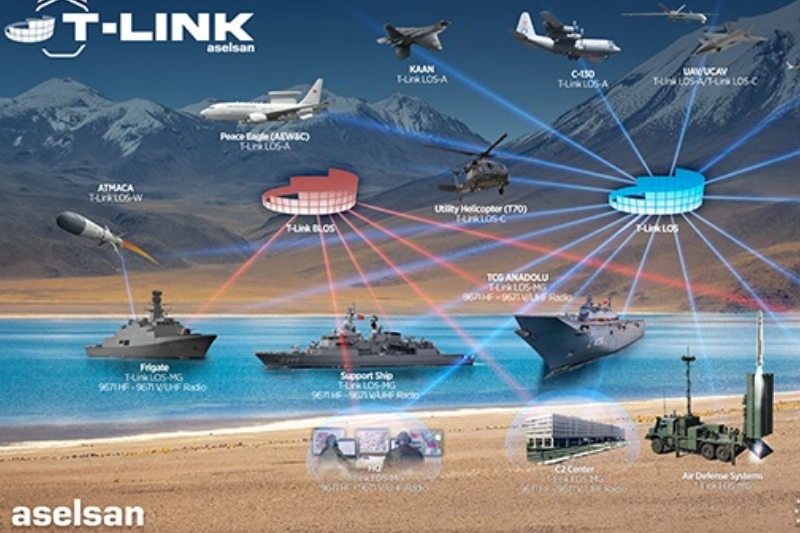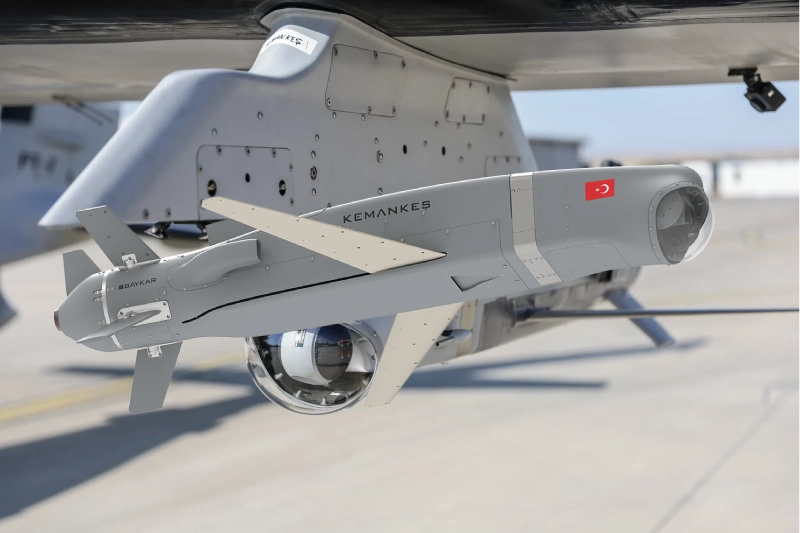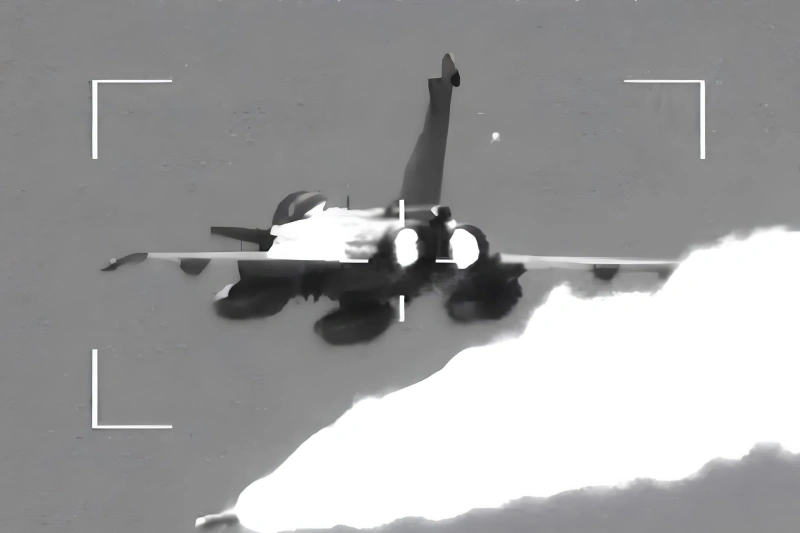J-36 Carrier Landing Breakthrough
China’s aviation researchers have just unveiled a major breakthrough: a new automated landing system for the J-36 stealth fighter that could allow this radical sixth-generation plane to safely touch down on moving carriers. This tri-engined, tailless flying-wing jet spotted over Chengdu in December stunned the world with its stealthy blended design and heavy payload capacity. But as its deputy chief designer warns, bringing such a “behemoth” onto a pitching carrier deck is extremely dangerous. In fact, landing a sixth-generation jet on a carrier is “extremely high” risk without special help.
The J-36 Stealth Fighter
The J-36 (an unofficial name following China’s fighter naming convention) is unlike any carrier plane before. It jettisons the traditional tail and vertical stabilizers entirely for stealth and aerodynamic efficiency. That makes it look like a giant triangle or even a “flying ginkgo leaf” in the sky. Its smooth, blended fuselage and three powerful engines give it potential for long-range strikes. But the very design that makes the J-36 stealthy also makes it hard to control on final approach. Without a tail, the jet must rely on elevons, pitch flaps, spoiler-slot deflectors and other control surfaces to stabilize itself. Those surfaces can even interfere with each other, causing destabilizing forces when a pilot tries a precise carrier landing.
Carrier Landing Challenges
Normal carrier jets use their tail fins and horizontal stabilizers to stay level during the final approach. The J-36 has none of that. On top of that, the pilot must deal with the “ship-airwake” effect turbulent wind currents thrown off by the moving carrier and rough seas. Imagine flying into a swirl of air coming off a superstructure and smokestacks, while the deck ahead is pitching up and down. Even standard jets struggle with that, but the J-36’s tailless design makes it much more sensitive. In short, a flying-wing can be thrown off its glide path by gusts and deck movements, with very little natural stability to self-correct.
Overcoming Airwake with Force Control
The Chinese researchers’ solution is a Direct Force Control system. Instead of having the pilot try to control the plane’s pitch angle to manage lift, the system decouples lift control from attitude. Using real-time calculations (and advanced mathematics like Jacobian matrices), it figures out how tiny tweaks to the control surfaces change the aerodynamic forces on the jet. In effect, the system “feels” the wind gusts and instantly adjusts flaps and spoilers to keep the lift steady without the plane nosing up or down. As one report notes, this approach can “effectively suppress disturbances from both ship airwakes and dynamic deck movements, enabling precise landings for flying-wing…aircraft.”. In other words, it helps the J-36 fight off carrier wake turbulence on the fly, giving the pilot a much more stable approach.
Auxiliary Control Innovations
In addition to the force-control algorithms, the system leverages new hardware features. The J-36 design includes three-dimensional thrust vectoring basically movable engine nozzles and drag rudders built into the wing tips. These give extra control authority when the usual surfaces (like flaps and ailerons) are not enough. The designers also use spoiler-slot deflectors along the trailing edge, which manage airflow and help preserve stability in chaotic conditions. Together, these innovations act like a second set of “hands” on the aircraft to keep it steady when a sudden gust or deck jolt occurs. They ensure the jet stays on the glide path even when conventional control might be overwhelmed.
Fixed-Time Disturbance Observer
Next, the team integrated a Fixed-Time Disturbance Observer (FTDO) into the system. Borrowed from advanced robotics, the FTDO continuously monitors how each control surface movement is affecting the jet. If any unexpected coupling or error appears say a strange cross-coupling force from a gust the observer detects it almost instantaneously. The controller then compensates for that disturbance in fixed time, on the order of seconds. In tests, the FTDO handled simulated sea states with six-metre waves, neutralizing random forces between control surfaces. In essence, this is a real-time “brain” that spots and cancels out disturbances, so the aircraft remains on course.
Simulation Results
The researchers put the whole package through brutal simulations. They modeled final approaches with high crosswinds, turbulent ship airwakes, moving decks and waves. In each scenario, the J-36 with its new control system was able to land astonishingly precisely. Altitude error was often just two centimetres in tests. Most touchdowns consistently fell between the second and third arresting wires on the deck dead-center under varying conditions. This consistency and precision is essentially unheard-of for such a radical design. As one summary put it, the system “enables precise landings for flying-wing configuration aircraft” even in the most extreme weather.
China vs US Magic Carpet
The Chinese system also differs markedly from the US Navy’s approach. The US has experimented with a “Magic Carpet” adaptive flight controller for carrier jets, but it relies on pre-set gain schedules tuned to each aircraft type. In contrast, China’s system treats every control surface as a dynamic element. It continuously recalculates inputs on the fly with fast algorithms, so the jet can adapt instantly to changing aerodynamics. In practice, this means the Chinese controller can customize its response to any disturbance in real time, rather than switching between fixed modes. The end result is far more stability in those critical final seconds of landing, according to the designers
Also read this: China Shocks Observers with Secret Jet Test Spotted on X
Future of Chinese Naval Aviation
This research is still in the development phase, but it represents a major step forward. The team says the next goal is to make the control architecture even more robust for example, handling component failures or damage during flight. Ultimately, their aim is to “lay the foundation for deploying” tailless fighters like the J-36 on carriers far from China’s shores. If successful, it would dramatically extend China’s naval air power. A stealthy, heavy-fighter that can operate from carriers would boost China’s ability to project force across oceans. It would also create a new class of carrier-based jets that combine full stealth, high payload, and extreme precision landings.
China’s J-36 team has tackled a daunting problem with a combination of smart software and novel hardware. By using direct force control, advanced sensors, and robotic-style disturbance observers, they’ve simulated carrier landings with pinpoint accuracy. This innovation could one day let China deploy its next-generation stealth fighters at sea, pushing its naval aviation into uncharted territory. The breakthrough landing system may not be finished, but it’s a clear sign of how far Chinese aerospace research has come. The final approach is still long and difficult but for the first time, the J-36 just might have what it takes to stick the landing on an aircraft carrier.
Keep connected with us at Facebook, Twitter, YouTube, Instagram & TikTok for latest defense happening around the globe.
Discover more from International Defence Analysis
Subscribe to get the latest posts sent to your email.













2 thoughts on “J-36 Carrier Landing Breakthrough”